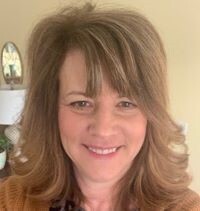|
Applications for the National School Lunch Program (NSLP) and School Breakfast Program (SBP) are due by August 30 for Residential Child Care Institutions (RCCI) and September 30 for Public and Private Schools.
Renewal Bulletins
- Residential Child Care Institutions
- Public and Private Schools
Resources
Questions? Contact your OSPI CNS School Meals Program Specialist.
The U.S. Department of Agriculture (USDA) Child Nutrition Programs are available for preschool-age children that attend a local pre-K community program, Early Childhood Education Assistance Program (ECEAP), Head Start and/or a Transitional Kindergarten program. These programs operate in classrooms located in Education Service Districts (ESD), community organizations, and Local Education Agencies (LEAs). ESDs and community organizations must operate the Child & Adult Care Food Program (CACFP). LEAs may choose to operate either the CACFP or the National School Lunch and Breakfast Programs (NSLP/SBP).
Requirements
- ESDs or Community Organizations receiving funds for preschool programs must be the CACFP sponsor when children are NOT enrolled in the public school district.
- ESDs and Community organizations operating classrooms on public school district campuses must establish an interagency agreement to receive meals and snacks from the public school district.
- Two different sponsors cannot claim meals or snacks served to the same group of students (i.e., the School District claims breakfast and lunch, while the ESD claims Snack).
- Meals or Snacks cannot be served under two different programs (i.e., Breakfast and Lunch under NSLP/SBP, while Snack is under CACFP). To claim snacks, CACFP must be operated for all meals and snacks.
Resources
Questions? Contact your School Meals or CACFP Program Specialist.
Monthly claims are due by the 15th of each month following the claim period. All claims entered in WINS and in OK to Pay status will process for payment at the end of the month.
WINS will be available to input claims until 5:00 pm PT, Tuesday, August 15. At 5 pm, WINS will log sponsors out of the system in order to run the monthly payment process.
Best Practice - Submit claims early in case an error comes up and you need assistance.
New Email!
We’re excited to share that our fiscal team has a new email! Here you can send us messages, ask questions, and get a faster response from our team. Next time you’re ready to send us a message, please email cnsfiscalservices@k12.wa.us, we’re excited to hear from you!
Meet Your CNS Fiscal Team!
 |
|
Debbie Libra, CNS Claims & Fiscal Manager
My name is Debbie Libra, and I am the new Fiscal Supervisor with Child Nutrition Services. I am a well-tenured accounting professional having worked in the accounting field the last twenty years at various small- and medium-sized businesses. Most recently, I worked for the Department of Children, Youth and Families in Capital Assets. After years of bookkeeping work and raising two kids, I decided to go back to school and earned my Bachelor's in Accounting from WGU in 2016.
In my time off, I enjoy gardening and antiquing (I love a good Estate sale!). My husband and I own a small Lavender farm in rural Oregon that keeps us busy in the summer months. I am excited to be part of the team at CNS and looking forward to meeting everyone!
|
Trisha Santee, Fiscal Specialist ll
Hello! I have worked for OSPI for 5 years, almost all of which has been with Child Nutrition Services. I love working with numbers and using Excel which explains my pursuit of an accounting degree. I support all our programs and our sponsors with their fiscal needs and questions.
My husband and I own a farm where we raise cattle, chickens, ducks, and guinea fowl. We are very passionate on our journey to become self-sufficient and are grateful our land can nourish our family and friends.
|
|
 |
 |
|
Josh Thompson, Fiscal Analyst
Hello, I am the new Fiscal Analyst with Child Nutrition Services. I am coming to OSPI after 3.5 years with Educational Service District 113 where I got my introduction to accounting and education. I graduated from Washington State University with a bachelor’s in business economics in 2019.
In my free time I love watching Seattle sports and spending time with my wife Hannah, and one year old daughter Elsie. We also have two golden retrievers named Oaklee and Benji who are crazy and help get us outside and stay active.
|
The Child Nutrition Database (CNDB), Release 26, is now available! The CNDB is a required part of the nutrient analysis software approved by USDA for use in the National School Lunch Program and School Breakfast Program. It is a nutrient database of over 10,000 food items.
Software companies must submit to the USDA their nutrient analysis and certification of compliance software with the updated CNDB by September 18, 2023, to maintain USDA approval.
Action Steps for Local Education Agencies (LEAs) and Local Schools
After September 18, 2023, LEAs, and local schools should verify with their nutrient analysis software company to ensure that the software includes the most current version of the Child Nutrition Database (version CN25).
You can find the current CNDB on the USDA Team Nutrition webpage.
The USDA-approved software lists are found here:
|
Program operators offering the National School Lunch Program (NSLP) and School Breakfast Program (SBP) during the 23-24 school year are encouraged to join us for monthly webinars!
OSPI CNS will discuss annual program requirements, new policy guidance, important reminders, and provide an opportunity for you to ask questions. The first webinar is scheduled for August 24!
|
|
 |
Register for the School Meal Programs Monthly webinars here!
Dates: Monthly, August–June 2024 Time: 2–3pm PT
Please note: You only have to register once and you will receive updates and reminders for each webinar.
Reminders
- Save us on your calendar! When you register, there is an option to add us to your calendar at the bottom of the confirmation email.
- A reminder email with your link to log into the webinar is sent 1 hour before the session starts.
- Follow up emails with a copy of the slides are sent to everyone registered for the session, even if they did not attend.
- We do not post recordings to the CNS webpages.
Please keep an eye out in your inbox for these emails, if you do not see them in your inbox please check your SPAM box.
|
The Washington State Department of Agriculture (WSDA) Farm to School Purchasing Grant is a competitive grant available to schools and childcare centers for the purchase and use of Washington-grown foods in child nutrition programs.
|
|
Who Can Apply
- Active program operators of the National School Lunch Program (NSLP), the Child and Adult Care Food Program (CACFP - childcare), and school districts who operate the Summer Food Service Program (SFSP) or Seamless Summer Option (SSO).
- Tribal Schools and Tribal Early Learning Centers.
|
|
| |
|
Timeline
-
Grant Period: November 2023–June 30, 2025
-
Application opens: August 9, 2023
-
Applications closes: Monday, September 25, 2023, at 5 pm PT
To apply or for more information, visit the WSDA Farm to School Purchasing Grant webpage or contact Claire Finnerty at 360-974-9752 or farmtoschool@agr.wa.gov.
|
|
The USDA Food and Nutrition Services’ Healthy Meals Incentives Initiative, Action for Healthy Kids, announced recently that it has awarded nearly $30 million in grants to 264 School Food Authorities (SFAs) across 44 states and the District of Columbia.
Of the 264 SFAs, 14 are from Washington state! Congratulations to the following SFAs:
- Anacortes School District
- Colville School District
- Ellensburg School District
- Harrington School District
- Mary Walker School District
- Newport School District
- North Franklin School District
- Palouse School District
- Port Angeles School District
- Port Townsend School District
- Prescott School District
- Pullman School District
- Waterville School District
- Wishram School District
Each SFA awarded will receive up to $150,000 to support them in improving the nutritional quality of their meals and modernizing their operations. Visit the Healthy Meals Incentives for Schools for more details.
Finding Income Applications Just Got Easier!
OSPI CNS created a webpage to help Local Education Agencies (LEAs) with the collection of student income data. Using this webpage, free and reduced-price meal applications and family income surveys are now at household's fingertips!
Households may scan the QR Code below or go to the Washington School Meals Application Finder webpage to find their LEA’s meal application and/or family income survey.

The data collected on these forms can help schools receive funding for several state need-based funding mechanisms such as E-Rate and the Learning Assistance Program (LAP). Information collected may also be used to qualify students for additional support and reduced fees. It is critical that parents return the income forms so LEAs can count all eligible students.
Please take a look at your website and identify ways that households can more easily access these resources.
Examples
- Include information on where to access electronic income forms on the food service or parent section of webpages.
- Make paper copies of forms easily accessible.
- Be clear about which form your LEA uses and at which schools.
- Clearly state that a household may apply for benefits at any time during the school year.
- Clearly state that household members do not have to be U.S. citizens for children to qualify for free or reduced-price meals.
- Ensure the application materials, FIS, and other communications with households concerning eligibility determinations are made available in a language parents and guardians understand, based on the community you serve.
Questions? Please reach out to the School Meal Team inbox for technical assistance and best practices.
|
The Institute of Child Nutrition’s (ICN) Planning Reimbursable School Meals for Menu Planners: Micro-Trainings is a series of resources designed to give managers or directors short lesson plans to train their staff. These short, 30-minute, easy-to-use trainings include a lesson plan and activities to provide an overview of the requirements for the National School Lunch Program (NSLP) and School Breakfast Program (SBP) based on the 2022 Transitional Standards for Milk, Whole Grains, and Sodium – Final Rule.
Available lesson plans include:
- Grain Component
- Milk Component
- Sodium
- Transitional Standards for Grains and Sodium
Congratulations to Lummi Nation School District, Mount Baker School District, and Nooksack Valley School District who were awarded the 2023 USDA Patrick Leahy Farm to School Grant.
OSPI CNS is excited to partner with Ecotrust, another USDA Farm to School Grant awardee, to offer Farm to School and Farm to Early Learning Institutes in WA and OR, coming Summer 2024.
Does your school have a Farm to School project idea that you are looking to fund? Every year USDA awards competitive Farm to School grants that support planning, developing, and implementing farm to school programs.
Click here to learn more about the Farm to School Grant Program.
Are you interested in increasing the number of local foods served as part of your meal program? The whole plate doesn’t have to be local; you can start small by implementing a Harvest of the Month program. OSPI will feature a Harvest of the Month section once a month highlighting one local food that will be in season the following month. We will highlight the following foods during SY 2023–24:
|
September – Peaches
|
February – Yogurt
|
|
October – Carrots
|
March – Wheat
|
|
November – Delicata Squash
|
April – Spinach
|
|
December – Lentils
|
May – Beets
|
|
January – Apples
|
June – Apricots
|
September – Peaches

September – Peaches
Fun Facts
- About 7,240 tons of peaches were produced in Washington in 2022.
- Available fresh in Washington from July to September.
- A member of the rose family and are closely related to almonds.
- Over 700 varieties including Nectarines whose smooth skin are caused by a genetic mutation.
- Peaches originally came from China. Portuguese and Spanish explorers brought peaches to the Americas.
- Two main types: Freestone, where the flesh does not stick to the pit, and Clingstone, where the flesh sticks to the pit.
- Their skin color is yellow or cream, sometimes blushed with red depending on the variety. The skin is slightly fuzzy. The flesh inside is usually yellow, but depending on the variety may also be white. An oval pit in the center needs to be removed before eating.
Peaches are high in fiber, contain vitamins A, B3, C, potassium, and antioxidants!
Selection and Storage
- Choose firm fruit with firm skins that yield to gentle pressure when ripe.
- Avoid blemishes and handle gently.
- Ripen peaches at room temperature, stem-end down. Store unripe fruit at room temperature in a paper bag until ripe.
- Fragrance is a sign of ripeness.
- Ripe peaches will last 1–5 days in the refrigerator.
|
Recipes
Educational Resources
For more ideas about what items you could feature as a Harvest of the month, visit WSDA’s Washington Grown Food & Recipe Kit and USDA’s Seasonal Produce Guide.
|
August 15
|
July Claims Due in WINS by 5 pm
|
|
August 29
|
June 60-day Claiming Deadline—if you haven't already, submit your claim
|
|
August 30
|
Residential Child Care Institutions (RCCI) Renewal Applications Due in WINS
|
|
September 30
|
Public and Private Schools Renewal Applications Due in WINS
|
|